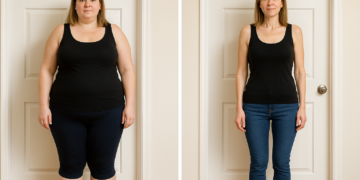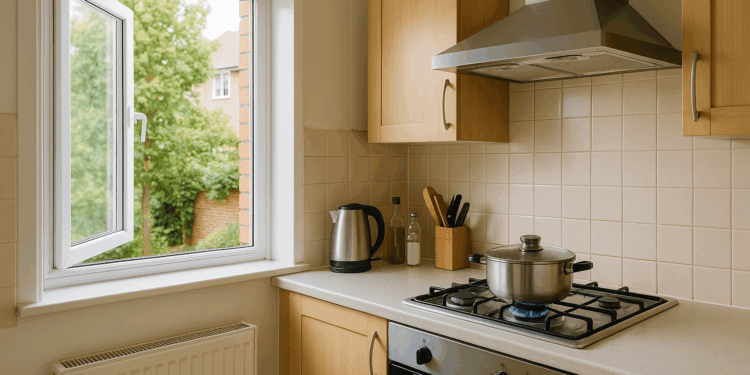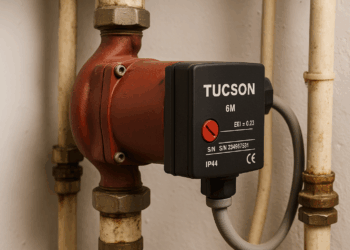Story Highlight
– Closed windows trap heat but limit kitchen ventilation.
– Gas cooking releases harmful air pollutants and health risks.
– Nitrogen dioxide from gas exceeds WHO air quality guidelines.
– Exposure linked to asthma, cognitive decline, and respiratory illness.
– Proper ventilation and electric appliances can enhance safety.
Full Story
As temperatures drop during the autumn months, many households are opting to close their windows in an effort to retain warmth. However, for those who rely on gas for cooking, this practice can pose significant health risks if kitchens are not properly ventilated.
The Clean Air Hub UK has highlighted that cooking with gas contributes to the release of air pollutants that can adversely affect both human health and the environment. Indoor emissions from gas cooking can lead to heightened nitrogen dioxide (NO2) levels, which often exceed the guidelines set by the World Health Organisation and UK Health and Safety Executive regulations for indoor air quality.
Researchers have identified a disturbing link between gas cooking and various respiratory health issues. The pollutants released during gas cooking can contribute to the development of asthma in both children and adults. The potential health risks extend beyond respiratory conditions, with studies suggesting associations between gas cooking and cognitive decline in adults as well as increasing instances of dementia.
Further elaborating on the dangers, experts point out that gas stoves can emit several harmful gases, including carbon monoxide and benzene—a recognised carcinogen. Methane, another by-product of gas cooking, is noted for its potency as a greenhouse gas. These pollutants can accumulate and linger in the home environment, raising concerns about indoor air quality.
The detrimental effects of nitrogen dioxide exposure are well-documented, leading to airway inflammation, decreased lung function, and exacerbated asthma symptoms such as coughing and wheezing, particularly in vulnerable populations, including young children. Recent findings suggest that the impact of indoor gas cooking on childhood asthma prevalence is akin to the effects of second-hand smoke. Additionally, it has been reported that exposure to high levels of nitrogen dioxide in early childhood is linked to developmental issues, including impaired memory and increased likelihood of ADHD symptoms.
For households who continue to use gas for cooking, there are essential strategies to mitigate health risks. The Clean Air Hub UK recommends ensuring adequate kitchen ventilation while cooking. This can be achieved through the use of a functional range hood that exhausts air outside or by opening windows to create a draught. It is also advisable to consider transitioning to electric cooking appliances if feasible.
Annual servicing of gas appliances is crucial, alongside the installation and maintenance of carbon monoxide detectors in kitchens and adjacent areas. These devices should reliably detect even low levels of gas emissions to alert residents to potential dangers.
Moreover, to further limit exposure to harmful emissions, individuals are encouraged to incorporate electric appliances into their cooking routines. Utilising devices such as electric kettles, microwaves, rice cookers, or air fryers can significantly reduce reliance on gas.
Experts strongly advise homeowners to maximise ventilation, not only during the cooking process but also for at least ten minutes following the use of gas appliances. This creates an effective means to disperse lingering pollutants. Maintaining cleanliness and proper function of any fan systems associated with gas appliances is also recommended, ensuring they direct pollutants outdoors.
As colder weather sets in, it is essential for those cooking with gas to remain vigilant about indoor air quality. Implementing the recommended precautions can greatly enhance safety and health for all household members.























Important point about ventilation. When cooking with gas, nitrogen dioxide and other combustion products can build up quickly in a closed kitchen so curtaining windows and relying only on recirculating hoods increases exposure. Practical steps that make a real difference include using a vented extractor to the outside, opening a window briefly while cooking, and ensuring fixed ventilation routes are not blocked. Where possible switching to electric or induction removes the combustion source entirely and is the simplest way to reduce the risk. For rented properties landlords should be reminded of their responsibilities to provide adequate ventilation and maintain appliances so occupants are not left breathing polluted air.
This is an important reminder to prioritise ventilation when cooking, especially as homes are more tightly sealed in colder months. Even short periods of gas cooking can raise nitrogen dioxide levels, so using extractor fans that vent outside, opening windows briefly while cooking, and ensuring regular maintenance of gas appliances will reduce exposure. Where possible consider switching to electric cooking, particularly in homes with children, older adults or people with respiratory conditions. Small practical actions can make a big difference to indoor air quality and health.
Good reminder. Many people do not realise how much indoor air quality can worsen when windows stay shut and gas appliances are used. Proper ventilation in the kitchen is vital, whether that means using an extractor that vents outside, opening a window when cooking, or switching to electric cooking where possible. Small changes can reduce exposure to nitrogen dioxide and other combustion pollutants and help protect respiratory health, especially for children and people with asthma.
Good reminder that simple measures can make a big difference. Ensuring adequate ventilation when cooking, using extractor fans that vent outside, opening a window briefly while the hob is on and keeping burners well maintained will reduce nitrogen dioxide and other pollutants. Where possible consider switching to electric or induction cooking to eliminate combustion emissions altogether. These steps help protect people with respiratory conditions and lower overall exposure for everyone at home.